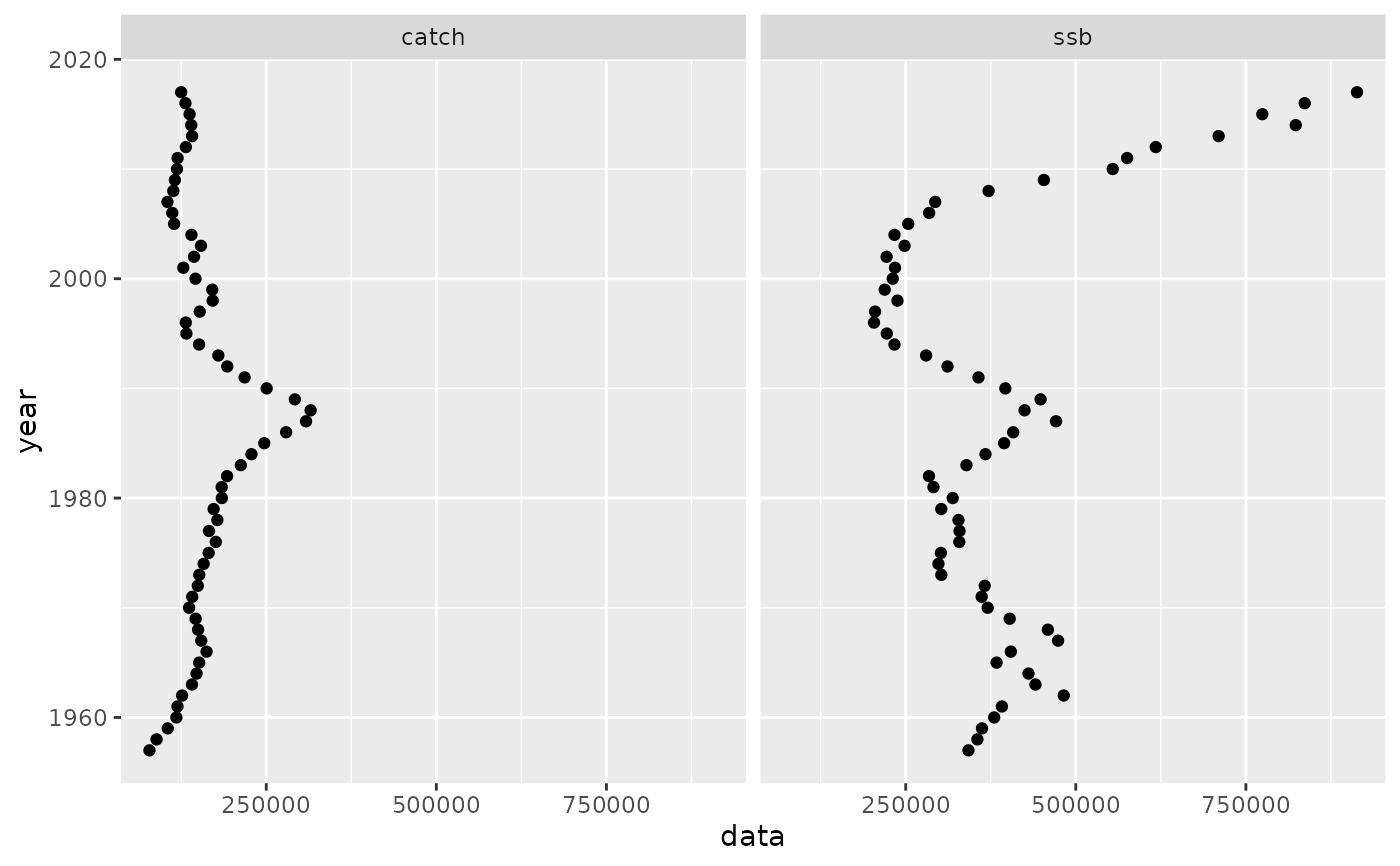The ggplot() method has been conveniently overloaded for various
FLR classes. A call to as.data.frame takes place on data
before passing all arguments to the original ggplot function.
# S4 method for FLQuant
ggplot(data = NULL, mapping = aes(), ..., environment = parent.frame())
# S4 method for FLQuants
ggplot(data = NULL, mapping = aes(), ..., environment = parent.frame())
# S4 method for FLComp
ggplot(data = NULL, mapping = aes(), ..., environment = parent.frame())
# S4 method for FLComps
ggplot(data = NULL, mapping = aes(), ..., environment = parent.frame())
# S4 method for FLPar
ggplot(data = NULL, mapping = aes(), ..., environment = parent.frame())Arguments
Details
Please look at the relevant as.data.frame method for each class to
understand the naming conventions used in the resulting data.frame

